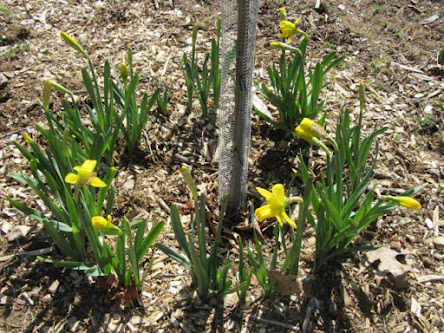Continuous selective harvesting of soft stem vegetables to increase yield, maximize
land use, reduce input cost and labour
The world demand for leafy vegetables growing on stalk or soft stems is rapidly growing. Despite the growing population, labour shortage has become a limiting factor for agricultural production and there is need to increase the amount of harvested vegetables at low labour input. One way to do this may be to consider harvesting the vegetable many times before it flowers and bear seeds. However, most western farmers have hardly explore this option of traditional selective harvesting that is geared towards increasing yield. This has left me pondering for a long time as I keep questioning myself …
Why do farmers harvest stalk leafy vegetables by uprooting them?
Ever since I traveled
to the West, I have been wondering why farmers keep harvesting leafy vegetables
by totally uprooting them. Once uprooted, the lifespan of the plants is over. Then
they will nurse new seedlings again, tilled the soil, peg and plant afresh. What
a waste of labour, time, inputs and harvest?
 |
| Rooted Amaranth (Green) |
I grew up in
Africa where I learned and practiced traditional farming practices from my
grand-mums, parents and the entire community. Yes, we had a routine of going to
the farm to cultivate our own vegetables and food crops every Saturday. A
practice I enjoyed doing even after leaving the University of Buea and
traveling to the West in 2003. In short, I am a proud farmer by birth and I don’t
remember a year without growing my own organic food in my home garden. My family
have been practicing subsistence farming and it is not by accident that I am
passionate about farming.
How to harvest soft stem leafy vegetables
Most leafy
vegetable grow on stalks that when harvested can develop new shoots from the
remaining nodes on the stalk. In this case we harvest leaving about 2-4 nodes
for new shoots to further develop, grow and spread out. Use a sharp knife and
cut the vegetable just above 3 nodes on the rooted stalk. Within 4 days, you
will see new lateral buds developing at the node. This may take about 10-14
days to fully grow into a broad leave stem vegetable ready for harvest.
So if you have a raised
bed full with leafy vegetables, it is certain that all will not grow at the
same rate, height or size. Normally these type of vegetables are usually
planted closely (about 15-20 cm apart) to each other because only the
vegetative growth is harvested as food. To ensure continuous harvest, you will
need to employ the concept of selective harvesting.
 |
| Cut amaranth (Green) |
Traditional selective harvesting practices
Selective
harvesting is required for leafy vegetables that grow less homogeneously or are
multi-annual. Selective vegetable harvesting allows us to harvest fresh
vegetables weekly for a long period of time. Soft stem leafy vegetable like
huckleberry (country njamajama), amaranths (green), bitter leaves and water
leaves falls within this category. At Suzy-Farms we practice selective
harvesting that enable us to harvest vegetables for about 2 months (at least 8 times) before they get mature. Once they are matured, they develop flowers and
seeds. This is a sure indication that harvesting will soon come to a halt. But
until then, these vegetables should be harvested by cutting the soft stem with
a sharp knife.
Within the bed of
closely planted leafy vegetable, first harvest only the big matured ones. All
small shoots vegetables should not be harvested. Leave these small ones to take
advantage of the space created after the first harvest to further develop,
spread out and growth bigger. Within a week, they must have grown bigger,
matured and ready for harvest. At the same time the node left on the stems
after the first harvest should have also developed young growing shoots. So by
the time you carry out the second selective harvesting, this young shoots will
also get enough space now to develop. This cycle may continue for 3 months with
continues weekly harvesting. Please watch this video to understand how it works…
Seeing is believing and believing is practicing. Click on our
youtube channel
to watch how it is done in our home garden.
 |
| Bounty harvest of cut Amaranth from flower beds (companion planting) |
Please make sure you grow organic, eat organic and live a healthy lifestyle. We live just ones! Don’t mess your life with unhealthy food. Start your own backyard garden as soon as possible so we can keep sharing information and good experiences. Grow your own food whenever possible and avoid frozen vegetable as much as you can. You can enhance your soil health by increasing the soil organic matter and also by practicing companion planting with beneficial synergies. This will also help to reduce pest and diseases while enhancing production. Please, make sure you harvest, cook and eat same day if possible. They are lots of vitamins and minerals in vegetables to nourish the body. These nutrients begins to reduce gradually from 8 hours after harvesting. Let your labour not go in vein. Harvest just when you are ready to prepare and eat. Watch this video here!!!
Our Slogan: From Farm to Table. Yes! Let’s do it. Experience it and share your story with us. Bingo!!! Those without gardens could buy fresh vegetables from organic stores or from your usual shop. However, stay away from frozen vegetable.We shall be uploading videos soon on our YouTube channel. Subscribe to our channel, like, comment and hit on the notification button to keep up with update. Like our Facebook page and follow us on Instagram and Twitter









